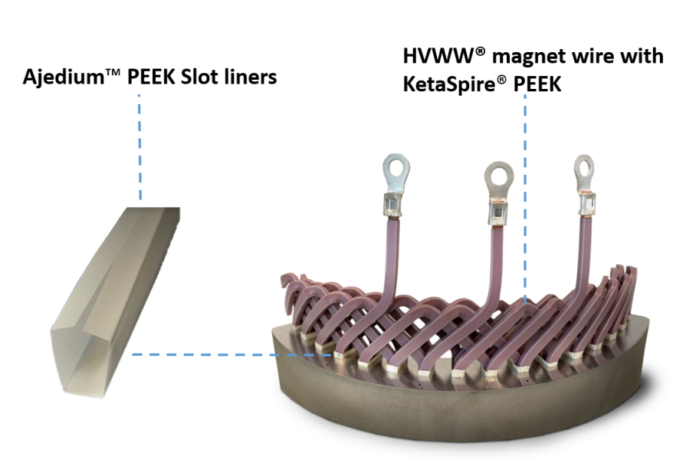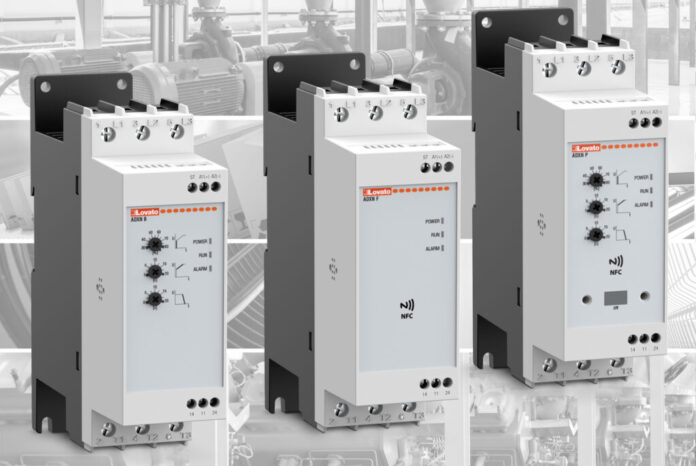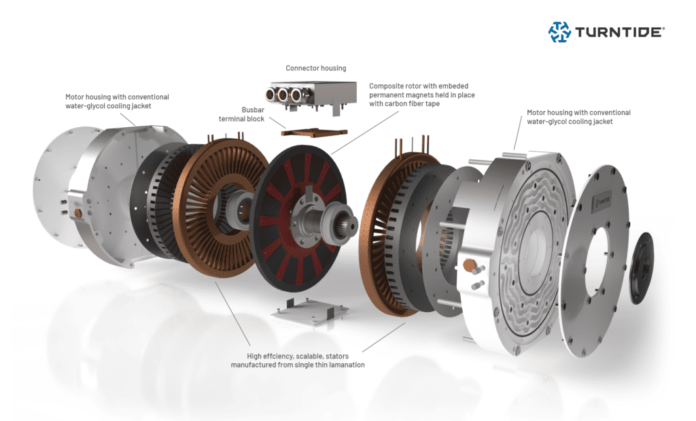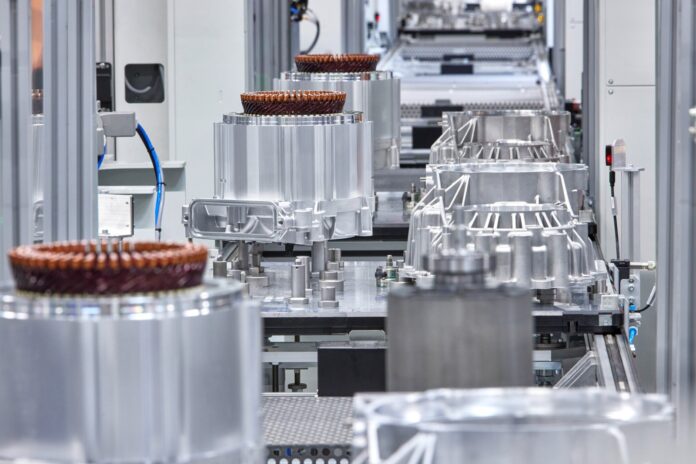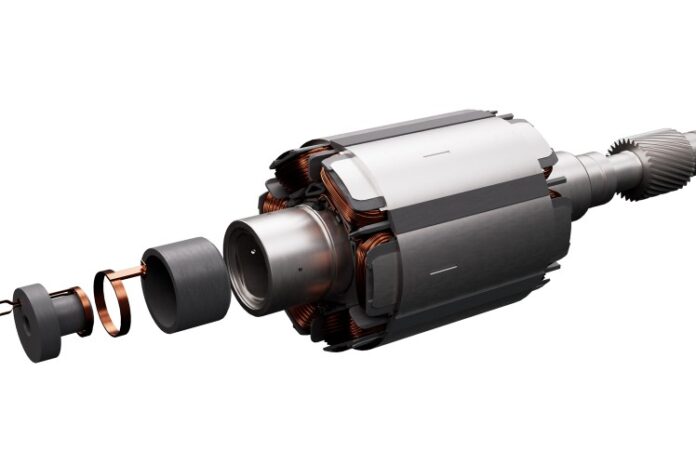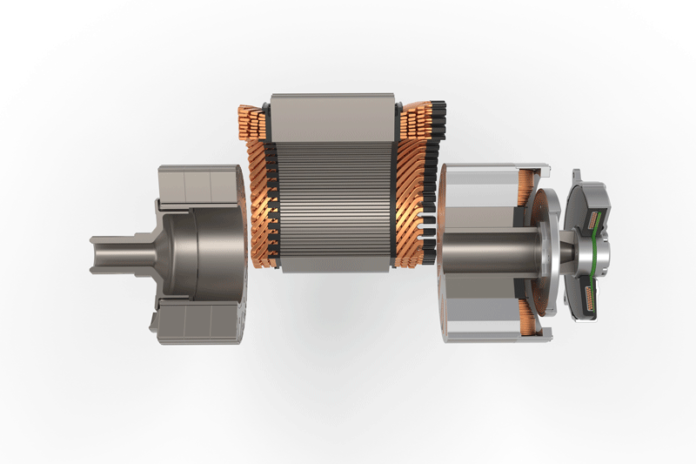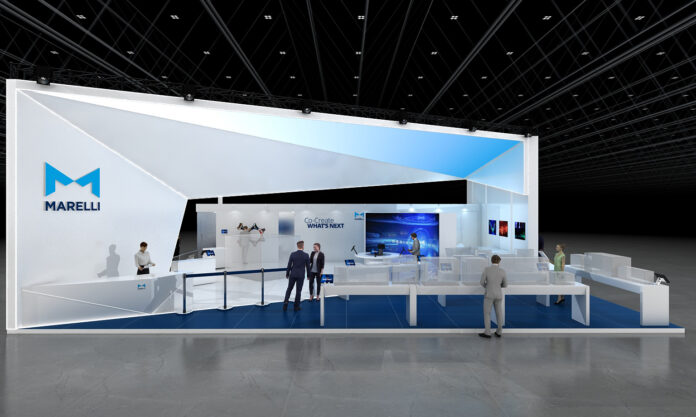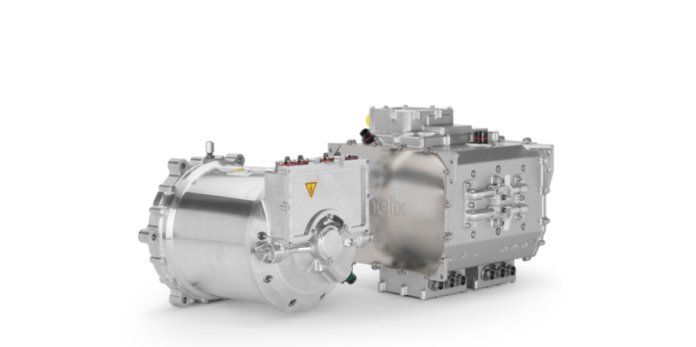The doubts about the autonomy, the weight, the cost and the use practicality of vehicles with electric motors lead to pay great attention to the development of more efficient, lighter and more compact batteries, electric motors and power electronics, which operate at higher voltages and allows the fast charge in DC.
“A clear target to be reached is these systems’ weight reduction and to achieve this result it is necessary to increase the efficiency of powertrain components and, in the case of the storage system, the density of stored energy. Concerning this, the new slot liner by Solvay, Ajedium™ PEEK allows satisfying the fundamental requisites in the design of electric motors but with the use of notably decreased thicknesses”, explained Stefano Montani, Marketing Manager Transportation at Solvay, Structural materials and Fuel Cell BOP.
This solution gives the possibility of notably increasing electric motors’ efficiency and consequently of reducing their weight, not only in terms of the component itself but of system as well.
“Until now, the materials used for the electric motors’ slot insulation have been mainly papers or paper laminates and films. One of the main drawbacks of this kind of solution is the strict hindrance on the thickness of the material itself. With the rise of the system voltage to 800 Volts and the adoption of the SiC technology for the power electronics, the resulting thickness with non-optimal materials is excessive, limiting the electric motor’s thermal and energy performances and, consequently, of the whole system, Stefano Montani added. Primary requisites are the following: maximizing the slot filling factor, minimizing the thermal resistance and allowing a better heat extraction from the system, supplying a suitable electric insulation and granting the electric motor’s expected service life. “In short, Ajedium™ PEEK has the potential of decreasing both the mass of the electric motor and the battery one. These systems’ mass reduction is enabled by the use of thinner PEEK slot coatings than thicker paper or laminate materials such as NKN”, the Manager of Solvay ended.
Coatings for lighter components
Converting buses to electric
Equipmake presents the last generation of its Zero Emission Drivetrain (ZED), an advanced electric battery powertrain, designed and developed from scratch to offer a green and cost-effective urban mobility.
Fully scalable and modular, ZED can be applied to any bus, from the single to the double-decker bus. Due to the electric motor, to the inverter and the power electronics in-house developed by Equipmake and which maintain an optimal operational temperature, combined with the latest lithium-ion batteries, the advanced technology of ZED assures high efficiency.
The electric HTM 3500 motor by Equipmake is perfectly integrated into the transmission shaft, without needing a separate transmission, and it has been designed with precision to satisfy the challenging requirements of a bus at full load, producing a torque of 3,500 Nm at a motor speed of just 1,000 rpm and delivering a maximum power of 400 kW.
Already used by operators worldwide, from London to Buenos Aires, ZED by Equipmake can share in decreasing local emissions in urban environments, in improving the air quality and in decreasing management costs for users and operators.
Soft starters preventing mechanical and electrical problems
Lovato Electric‘s ADXN soft starters manage the soft start and stop of electric motors, preventing mechanical and electrical problems that can reduce their lifetime.
The range includes devices from 6 to 45 A, only 45 mm-wide and subdivided into 2 structural sizes according to the nominal current.
Ideal for manifold applications such as the control of pumps, fans, compressors, conveyor belts and mixers, they are configurable rapidly and intuitively for a reduced set of parameters, minimizing the commissioning time.
The wide line voltage range, from nominal 208 to 600 VAC, makes them suitable for each market, without needing to manage different codes depending on the present voltage in the plant.
ADXN soft starters are available with two auxiliary power supply voltages: 24 VAC/DC, typical voltage of automation panels, or 100-240 VAC, present for instance in pumps’ control panels.
The base version (ADXNB) is ideal for those needing a starter easily configured, with the only aim of managing acceleration ramp and deceleration ramp, adjustable by means of the 3 potentiometers installed on the front.
Since 2027 on trade motors with half of magnets
The new powertrain by the German DeepDrive, which will be available starting from 2027, will use 50% less of magnetic material and 80% less of iron. The motor manufacturer has explained that there will be a new winding system that can boast a filling factor of slots exceeding 80%.
Moreover, the radial-flux unit will have two rotors, one internal and one external, separated by two air bearings and they will be combined with a two-stage spur gear and an integrated silicon carbide (SiC) inverter with coaxial output shaft. The result is a reduction of overall dimensions. The transmission unit will be perfectly integrated into the wheels or installed like a conventional central transmission.
On the announced powers, DeepDrive will offer a drive torque of 430 Nm and an output power of about 312 HP, with variable transmission ratios that will provide output torque included between 2,700 and 3,.800 Nm.
For the most performing model, the maximum output torque will be 5,400 Nm and the output power of around 475 HP.
Turntide Technologies presents the new range of axial-flux motors
The new range of Turntide Axial Flux motors has a design characterized by a configuration with double stator and single rotor and offers a series of advantages in comparison with conventional radial flux motors, including more compact sizes, torque by 30-40% higher, more power density and precise control.
They are motors ideated to replace radial-flux motors in applications such as commercial vehicles, building machines, hybrid vessels, industrial robots, fans for FC radiators, hydraulic pumps and in all places where the space and the weight are limited and efficiency is important.
“Unlike radial-flux motors, axial flux motors have a distinct geometry where the direction of the magnetic flux is parallel to the motor’s rotation axis. This design offers higher torque and power, even using the same electric components of radial-flux motors. Moreover, due to an extremely low length/axial diameter ratio, axial-flux motors are “flat” and have a smaller and lighter form factor than radial motors”, Turntide states.
Bosch accelerates recharge times through 800-volt technology
Bosch is starting the production of new propulsion systems based on the 800-volt technology, which will speed up recharge times, taking a further step forward for electric vehicles, with more powerful thrusters. The 800-volt inverter version is based on silicon carbide semiconductors that increase the efficiency and then the duration, too. Moreover, the power density of the 800-volt variant of the electric motor has been enhanced, decreasing its weight and obtaining a more compact design.
In recent years, 400-volt solutions have widely established themselves as sector standard. With the same current, but with a double voltage, it is now possible to transmit the double power, a solution that allows using thinner cables, saving space, weight and copper, therefore with a more compact and powerful inverter.
The primary characteristics of the 800-volt variant of Bosch electric motor, now mass-produced, are the 830 Nm torque and the 460-kilowatt power. Due to use of the I-pin bar winding, it is possible to further improve the efficiency, the compactness and the automation level of the motor in manufacturing phase.
An electric compact motor without magnets and rare earths
“This advanced variant of a separately excited synchronous motor is thus an alternative to permanent-magnet synchronous machines (PSM)” ZF explains in a recent press release. The novelty is a separately excited I 2 SM synchronous motor by ZF that transmits the energy for the magnetic field through an inductive exciter inside the rotor shaft. This makes the motor extraordinarily compact with the maximum power and torque density.
PSM machines are currently the most used motors in electric vehicles but they are based on magnets that need rare earth materials for their production. With I2SM, ZF establishes a new standard to make electric motors extremely sustainable in production and highly powerful and efficient in operation.
Dr. Holger Klein, CEO of ZF said: “With this magnet-free e-motor without rare earth materials, we have another innovation with which we are consistently improving our electric drive portfolio to create even more sustainable, efficient and resource-saving mobility. This is our guiding principle for all new products. And we currently see no competitor that masters this technology as well as ZF.”
Compared to common SESM systems, the inductive exciter can reduce losses for the energy transmission into the rotor by 15 percent. In addition, the CO2 footprint in production, which arises with PSM e-motors in particular due to magnets including rare earth materials, can be reduced by up to 50 percent.
A technological kit for high peak power and absence of rare earths
The German manufacturer Mahle has recently presented an innovation in electrification ambit: a technological kit for electric motors that combines the advantages of its SCT and MCT electric motors. The MCT electric motor is the Magnet-free Contactless Transmitter and the electric resistance-champion SCT motor is the Superior Continuous Torque, which operates contactless and without rare earths.
The elimination of rare earths in MCT technology makes manufacturing more eco-friendly and implies also advantages in terms of costs and safety of raw materials. The MCT electric motor is characterized by long duration and the absence of maintenance because the necessary transmission of electric current among rotating and fixed parts inside the motor occurs contactless and then is wear-free.
The MCT electric motor features a high efficiency in a broad speed/torque range. The SCT electric motor is instead designed to reach the best efficiency in the main optimized operational points. Another highlight of the SCT electric motor is its high constant power. Despite the very compact and light structure, this corresponds to the 93-100% of the peak power, as the measuring results show. This unprecedented high ratio allows its use in electric vehicles of all kinds, even under very challenging conditions.
New smart mechatronic actuators for electric vehicles
In a scenario where we expect that the cars of the future will include more than 100 actuators with different functions, Marelli releases its new range of smart multifunction mechatronic actuators intended for electric vehicles, designed to simplify the actuation of complex functions.
The new actuators include an electronic module, which autonomously controls the actuator itself and connects it with the electronic net of the vehicle. The device features a flexible, modular and scalable mechanical design, able to suit complex configurations of the vehicle concerning electronics and transmission, and a software management designed to simplify the integration. Spotlights are then cast on the transmission of hybrid and full electric vehicles that find application in several systems
A new low-inductance 650kW continuous-power motor
X-Division SPX177 is the most powerful motor for BEV electric vehicles ever manufactured by the British company Helix, famous for its package that they define Scalable Core Technology (SCT). With a weight of just 28 kg and a constant power of 650 kW, this motor will equip a hypercar by a manufacturer not revealed, yet. «It’s small and weighs just 41kg, including the 13kg inverter. It is a 2x 3-phase motor, so its current is shared across two inverters, a necessary approach to meet the phase current demands at ‘normal’ DC voltages at this extremely high-power level. Both the motor and inverter have extremely high-power density. Six high-voltage cables connect the inverter to the motor, while an LV connector carries the various control signals», affirmed the project manager Derek Jordanou-Bailey, head engineer of Helix. He added that the motor uses the ‘top end’ of materials.

